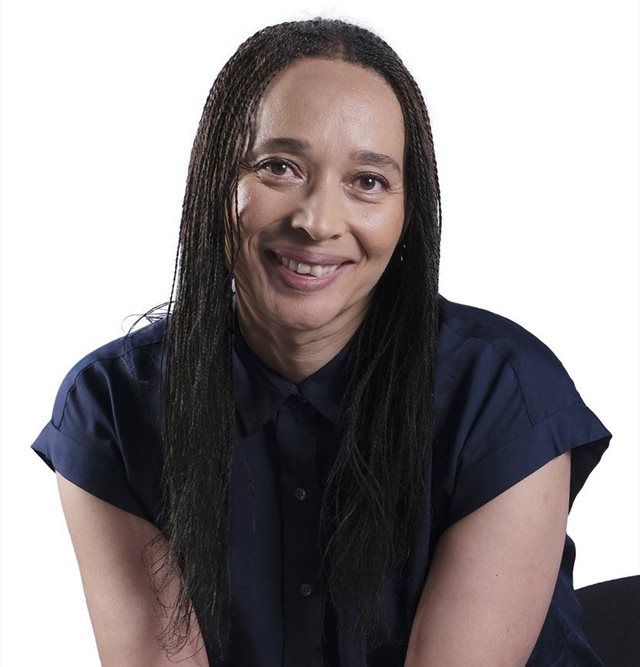Africa is a great repository for untapped and untold stories

Today Africa has a population of 1.1 billion and also the youngest population. By 2050 that will have doubled and is expected to generate 10-15% GDP growth in the next 15 years. These fundamental shifts are also reflected in a key figure of special interest to us: the amount spent on entertainment and media (E&M).
According to research conducted by PwC South Africa last year, E&M spend in South Africa is expected to reach R177.2bn by 2022. Nigeria saw a 25.5% rise in E&M revenue in 2017 to US$3.8bn. Ghana’s E&M industry has more than tripled in value since 2013. Total E&M revenue in Tanzania rose by 28.2% to half a billion dollars in 2017.
That is substantial growth, and it raises the following set of questions: as entertainment consumption increases, what can we say about the nature of that consumption? Where is that entertainment produced, and whose stories does it comprise?
Well, for a start, a lot of that media is television. We watch a lot of TV. Kenya watches twice as much as the world average. South Africa and Nigeria aren't far behind.
Secondly, a rapidly increasing amount of that television is produced by African production houses, and is telling African stories. This is in line with local content requirements from regulators such as the Independent Communications Authority of South Africa (ICASA), but quotas are not themselves the reason for the increase. In South Africa, MultiChoice has spent far more on local content, and broadcasts a far greater proportion of local content, than is mandated by ICASA.
The reason for the increase is simple: the demand is there, and its exceeding supply – its currently sitting at nearly double of the minutes available for broadcast. We, as a country and as a continent, are hungry for local storytelling.
There's clearly a market to support the continued, and increased, investment in local content, and there's also a clear business case for doing so. The ability to effectively support these African storytellers will certainly differentiate competitor offerings.
This all means that the increase in local content is going to continue. Right now, MultiChoice, as the largest local content creator on the continent, produces 4,500 hours of African content, and spends R2.5bn on this content, each year. It produces content in 17 languages for distribution via 22 channels tailored to specific African markets in 50 countries. In 2013, local content spend as a percentage of total content spend was on average 30%. In 2018 it averaged 39%. By 2022 it will potentially sit at 45%.
The effects of this expenditure, apart from satisfying the demand of viewers, include the development of local storytelling talent, an increase in the number of independent production houses across Africa, and the growing contribution of local content production to employment and economic growth.
In South Africa, the National Film and Video Foundation estimated that in the 2016/17 financial year the country's film industry had a direct impact of R4.4 billion on economic production, and indirectly, the operations of the film industry raised the level of national production by approximately R12.2 billion. This is significant.
Even as the expenditure on local content increases – MultiChoice contributed over a billion rand to South Africa’s local entertainment industry between April and September last year, recently upgraded its Nairobi office to a regional hub and launched three other offices, in East, West and Central Africa – the barriers to entry in terms of the cost of equipment and processes continue to fall sharply. We have seen the construction of world-class studios and post-production facilities, and accompanying logistics and service industries rise up to support them, across Durban, Johannesburg and Cape Town.
In a worldclass industry looking to take African stories to the world, the result is tremendously heartening: a multiplicity of stories told in a creatively diverse way, reflecting our rich cultural background and unique position globally. For content creators, distributors, and viewers across Africa, this is a good time to be a part of the African television revolution.
About Yolisa Phahle
Yolisa Phahle is CEO of general entertainment for MultiChoice Group.Related
Creative giants TBWA and Ogilvy headline AdFocus Awards 2024 finalists 24 Oct 2024 2024 FM AdFocus Awards entries open 15 Aug 2024 IAB Bookmark Awards announces 2024 jury panels 28 Mar 2024 Mzansi Magic reveals new historically inspired drama series, Queen Modjadji 23 Feb 2024 MultiChoice and Disney Africa sign multi-year distribution renewal 21 Feb 2024






















